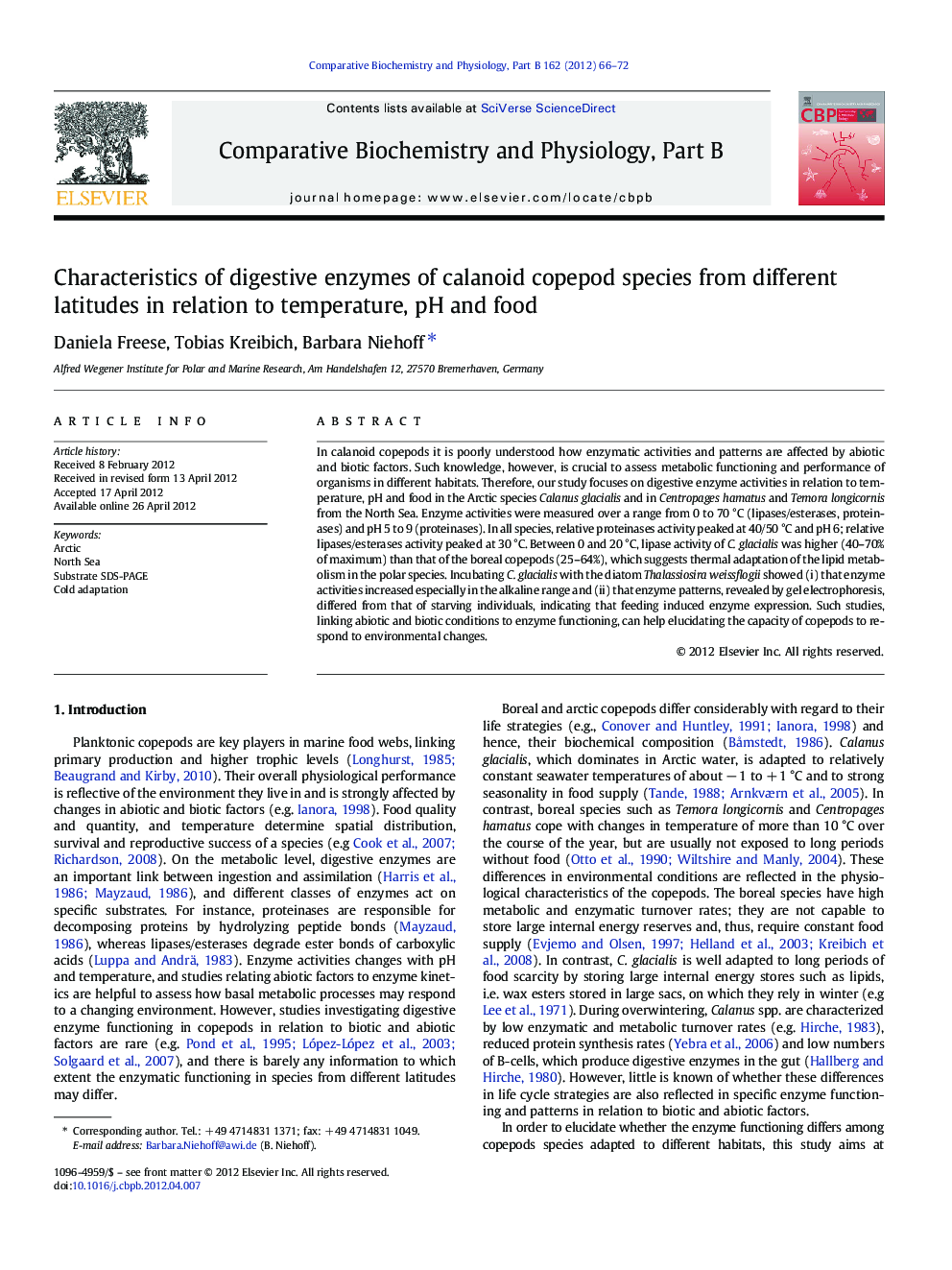| Article ID | Journal | Published Year | Pages | File Type |
|---|---|---|---|---|
| 1975473 | Comparative Biochemistry and Physiology Part B: Biochemistry and Molecular Biology | 2012 | 7 Pages |
Abstract
In calanoid copepods it is poorly understood how enzymatic activities and patterns are affected by abiotic and biotic factors. Such knowledge, however, is crucial to assess metabolic functioning and performance of organisms in different habitats. Therefore, our study focuses on digestive enzyme activities in relation to temperature, pH and food in the Arctic species Calanus glacialis and in Centropages hamatus and Temora longicornis from the North Sea. Enzyme activities were measured over a range from 0 to 70 °C (lipases/esterases, proteinases) and pH 5 to 9 (proteinases). In all species, relative proteinases activity peaked at 40/50 °C and pH 6; relative lipases/esterases activity peaked at 30 °C. Between 0 and 20 °C, lipase activity of C. glacialis was higher (40-70% of maximum) than that of the boreal copepods (25-64%), which suggests thermal adaptation of the lipid metabolism in the polar species. Incubating C. glacialis with the diatom Thalassiosira weissflogii showed (i) that enzyme activities increased especially in the alkaline range and (ii) that enzyme patterns, revealed by gel electrophoresis, differed from that of starving individuals, indicating that feeding induced enzyme expression. Such studies, linking abiotic and biotic conditions to enzyme functioning, can help elucidating the capacity of copepods to respond to environmental changes.
Keywords
Related Topics
Life Sciences
Biochemistry, Genetics and Molecular Biology
Biochemistry
Authors
Daniela Freese, Tobias Kreibich, Barbara Niehoff,
